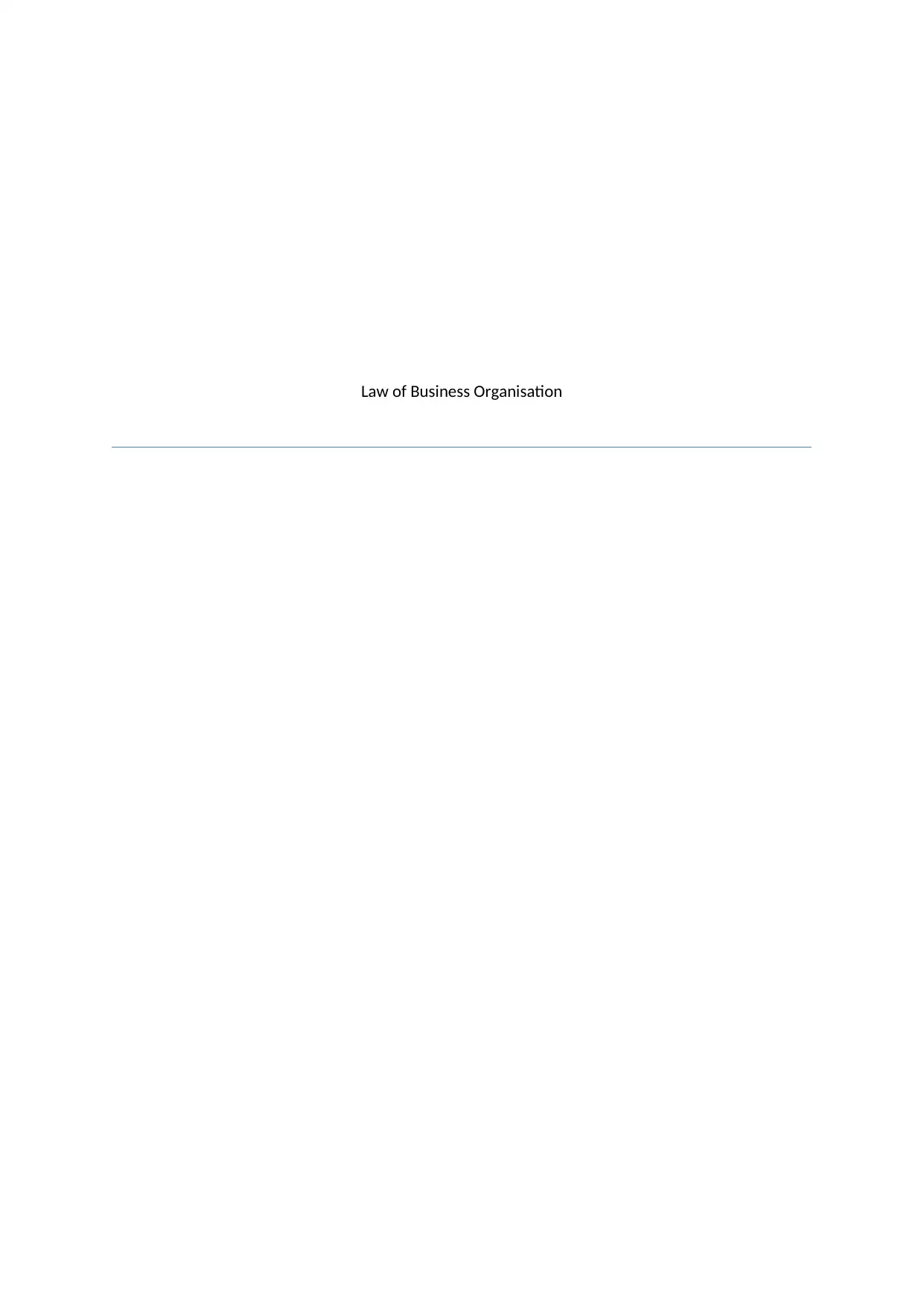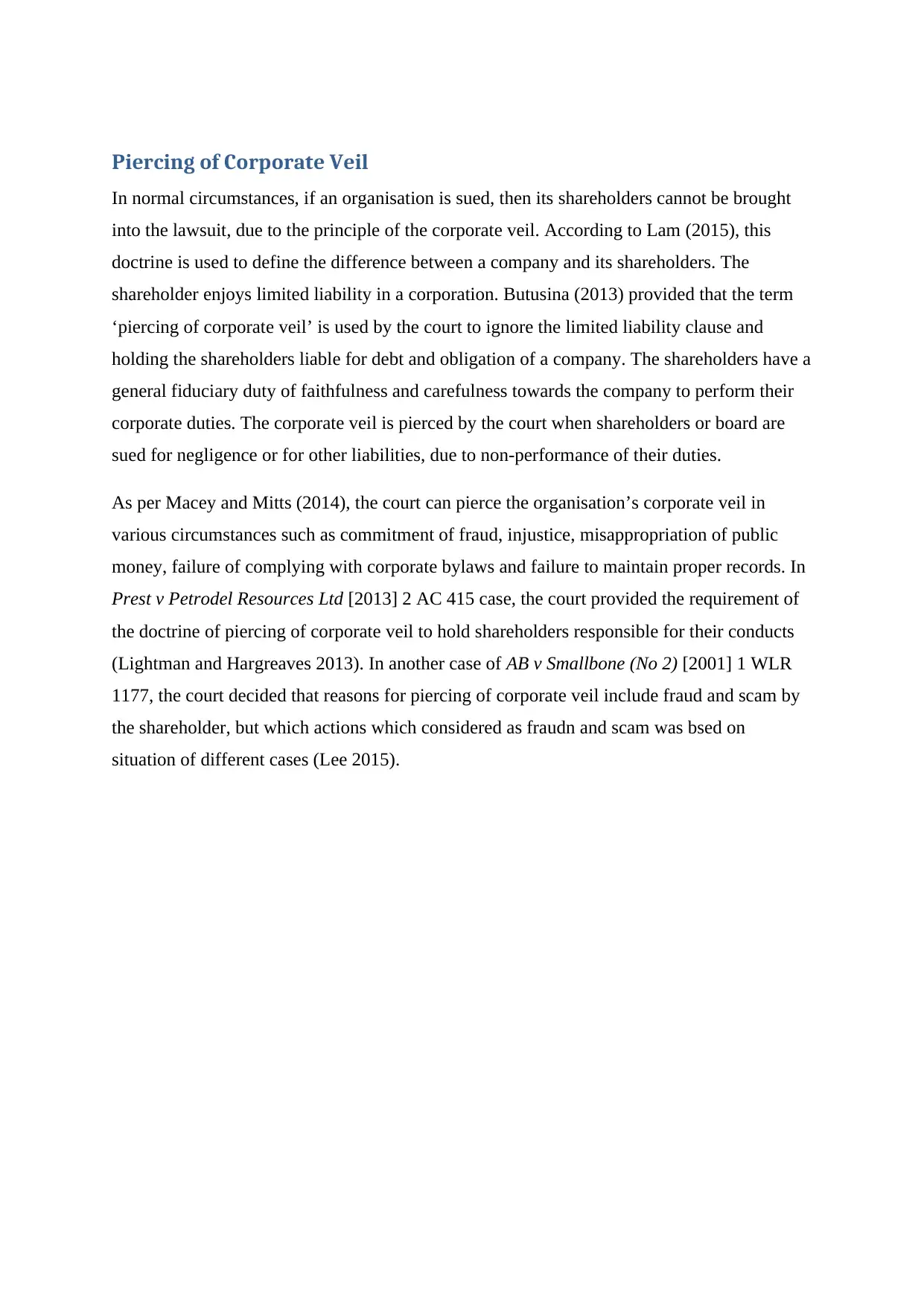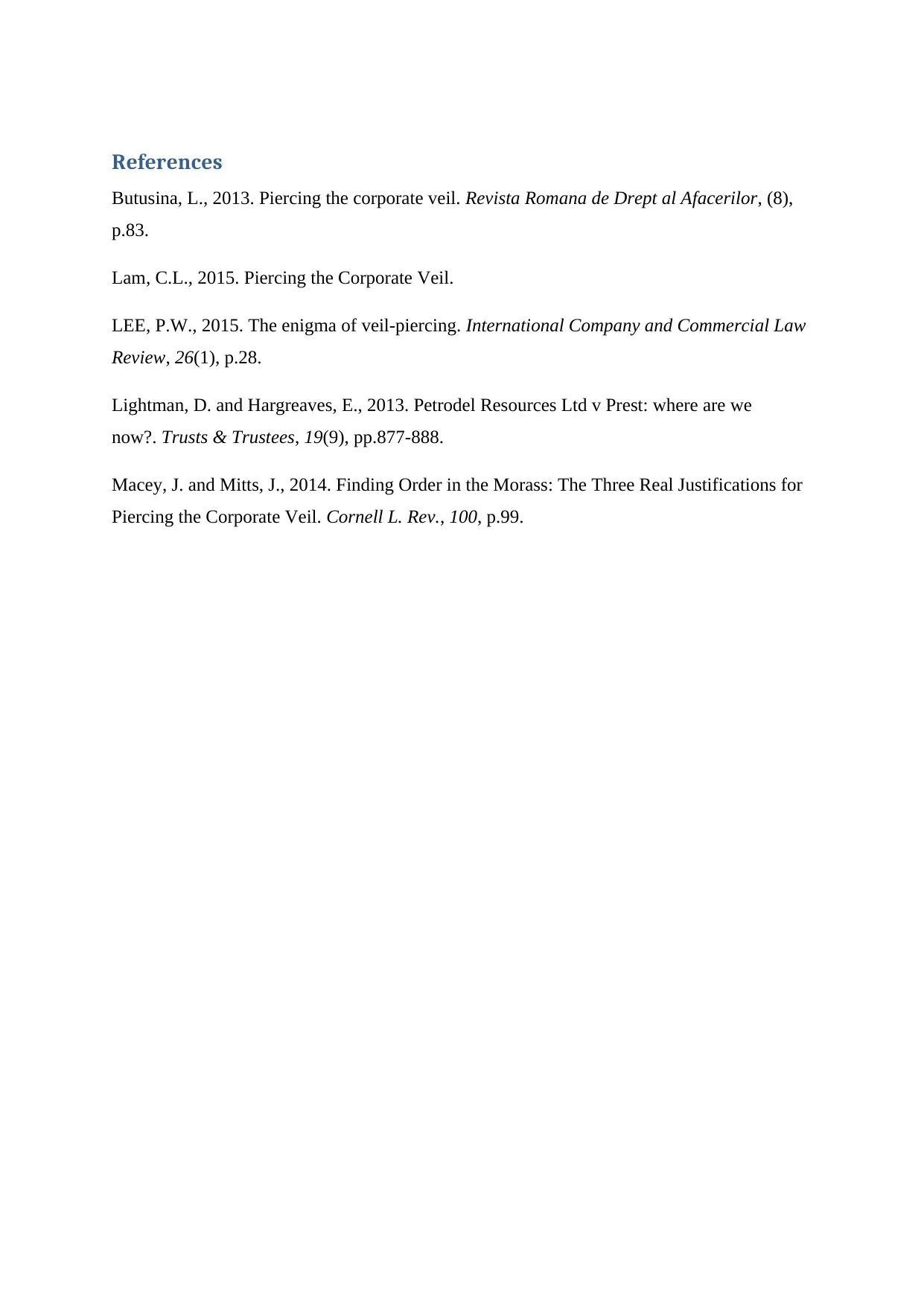Business Law: Corporate Veil Piercing and Legal Implications
VerifiedAdded on 2020/04/07
|3
|430
|100
Report
AI Summary
This report delves into the legal concept of piercing the corporate veil in business law. It explores the circumstances under which a court may disregard the limited liability of a corporation, holding shareholders responsible for the company's debts and obligations. The report examines the doctrine's application, discussing relevant case laws such as Prest v Petrodel Resources Ltd and AB v Smallbone, to illustrate how courts determine when to pierce the corporate veil. The report also highlights the importance of shareholder responsibilities and the implications of fraudulent activities or non-compliance with corporate bylaws. The report emphasizes the significance of corporate governance and the legal principles that govern the relationship between a company and its shareholders. The report also discusses the factors that lead to the piercing of the corporate veil, and the implications for shareholders.
1 out of 3










![[object Object]](/_next/static/media/star-bottom.7253800d.svg)